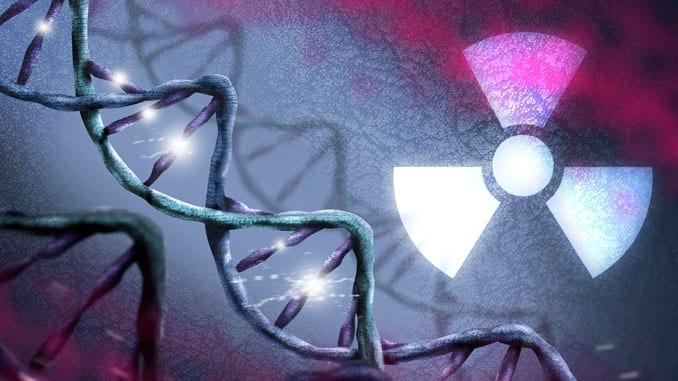Presented at the RRS 2025 Workshop: Medical Countermeasure R&D in the Radiation Research Community, a new study introduces a promising oral formulation that could transform medical response capabilities during radiological emergencies. The research, published through the Radiation Research Society, explores a zwitterionic chitosan-based compound—chitosan@DOTAGA—as a dual-function oral agent for radionuclide decorporation* and radioprotection.
Current frontline countermeasures—such as potassium iodide, Prussian blue, and Ca-DTPA—suffer from narrow effectiveness windows, systemic toxicity, or administration challenges that limit mass-casualty readiness. The new compound addresses these limitations by combining chelation capabilities with antioxidant properties, all while remaining in the gastrointestinal tract to avoid systemic side effects.
A Biopolymer Engineered for Safety and Efficacy
Chitosan is a biocompatible, naturally occurring polysaccharide already used in food supplements and drug delivery systems. The innovation lies in functionalizing chitosan with DOTAGA, a powerful chelating moiety, creating a zwitterionic polymer that remains water-soluble, non-toxic, and effective when administered orally.
- Non-absorbable design: In vivo biodistribution studies confirmed that the compound does not cross the intestinal barrier—a critical safety feature that limits systemic toxicity.
- Rapid clearance: The polymer is excreted efficiently via the feces, minimizing the risk of accumulation.
Dual Defense Against Radiation Hazards
The compound offers two core benefits:
- Chelation of radionuclides and heavy metals: It effectively binds and facilitates the excretion of radionuclides such as plutonium-242 (⁴²Pu), americium-243 (²⁴³Am), and natural uranium.
- Mitigation of oxidative stress: Chitosan’s intrinsic reactive oxygen species (ROS) scavenging properties are enhanced in this formulation, offering protection from radiation-induced cellular damage.
Preclinical Results Signal Broad-Spectrum Potential
In vivo assays in mice demonstrated the compound’s capacity to:
- Reduce gastrointestinal absorption of heavy metals.
- Effectively decorporate uranium and attenuate associated inflammatory responses.
- Show chelation activity against actinides, including isotopes relevant to nuclear accidents and dirty bomb scenarios.
These findings position chitosan@DOTAGA as a broad-spectrum, orally administered countermeasure with significant potential for large-scale civilian or military deployment.
Toward Mass-Deployable, Shelf-Stable Radioprotectants
The formulation’s oral route of administration, low toxicity profile, and low-cost production from natural sources make it ideal for:
- Stockpiling by governments and emergency management agencies
- Rapid distribution to exposed populations during nuclear incidents
- Integration into field kits for military, first responders, and humanitarian aid workers
Future development efforts will focus on preclinical safety evaluation, expanded efficacy across radionuclides, and formulation into stable oral dosage forms such as tablets suitable for deployment in austere environments.
Chitosan@DOTAGA represents a compelling step forward in non-invasive, scalable countermeasures for radiological emergencies. As development progresses, it could fill critical gaps in current medical preparedness frameworks, offering broad-spectrum protection and practical deployment in the face of accidental or deliberate radiological contamination.
Durand A., Tillement A., Howard J.A., Kuznietsova H., Dziubenko N., et al. Zwitterionic chelatant chitosans for oral administration in the context of radioprotection. RRS 2025 Workshop: Medical Countermeasure R&D in the Radiation Research Community, Radiation Research Society, Apr 2025, San Antonio (TX), United States.
* Radionuclide decorporation refers to the process of removing radioactive substances from the body after internal contamination, typically through ingestion or inhalation. This is achieved using agents that bind to radionuclides and promote their excretion. Radioprotection, on the other hand, involves the use of substances that protect healthy tissues from the damaging effects of ionizing radiation, either by shielding cells from radiation-induced injury or by reducing oxidative stress and inflammation. Both strategies are essential components of medical response in radiological and nuclear emergencies.


